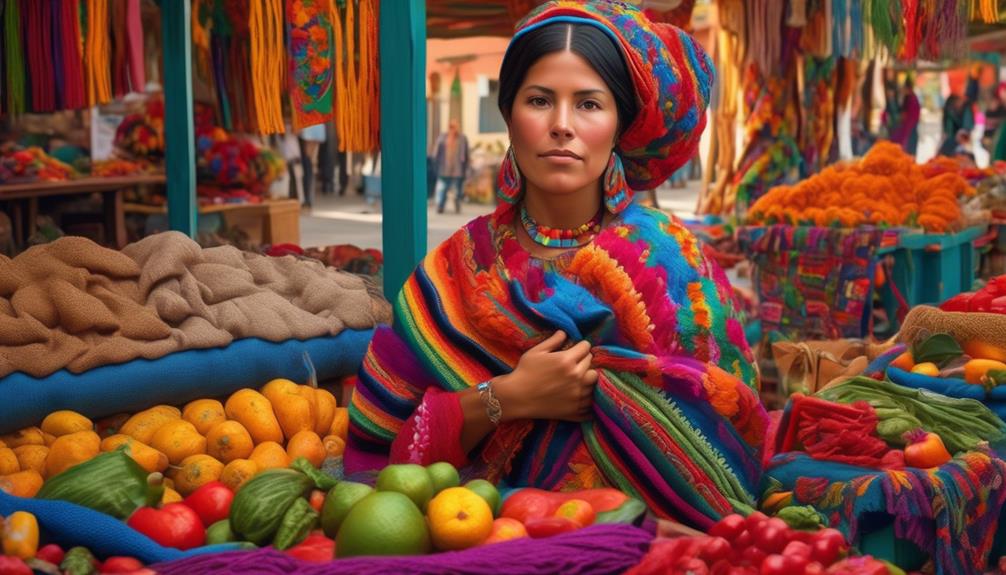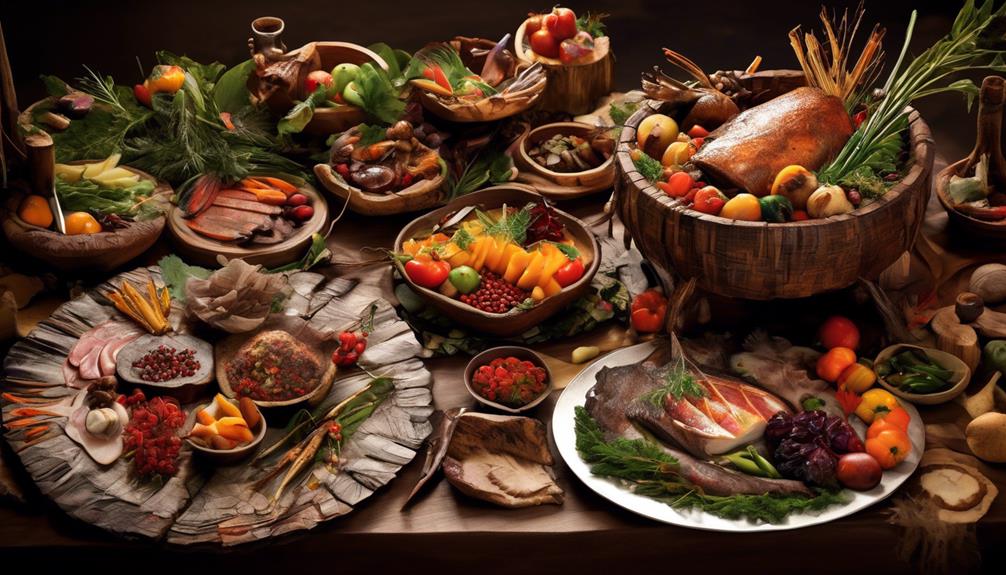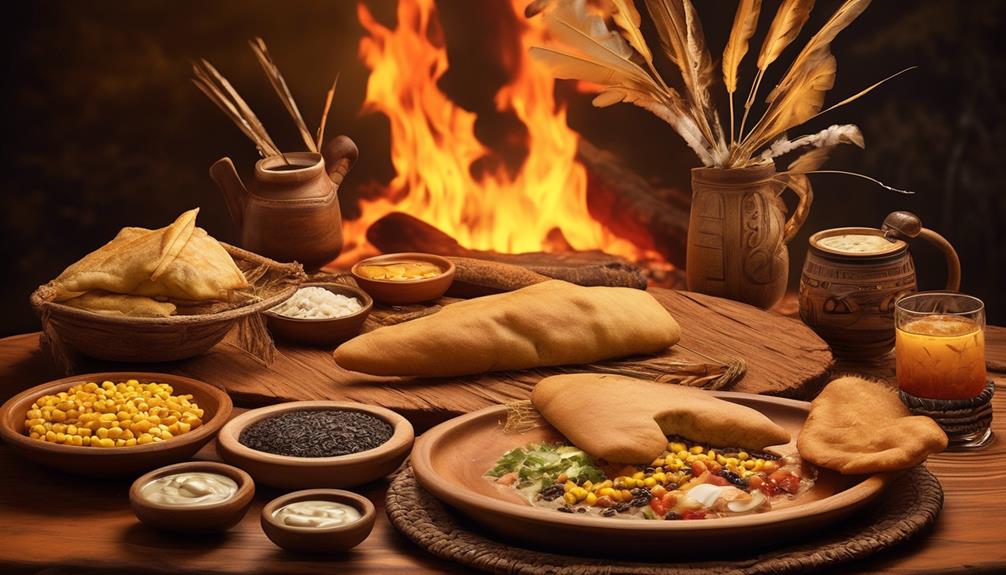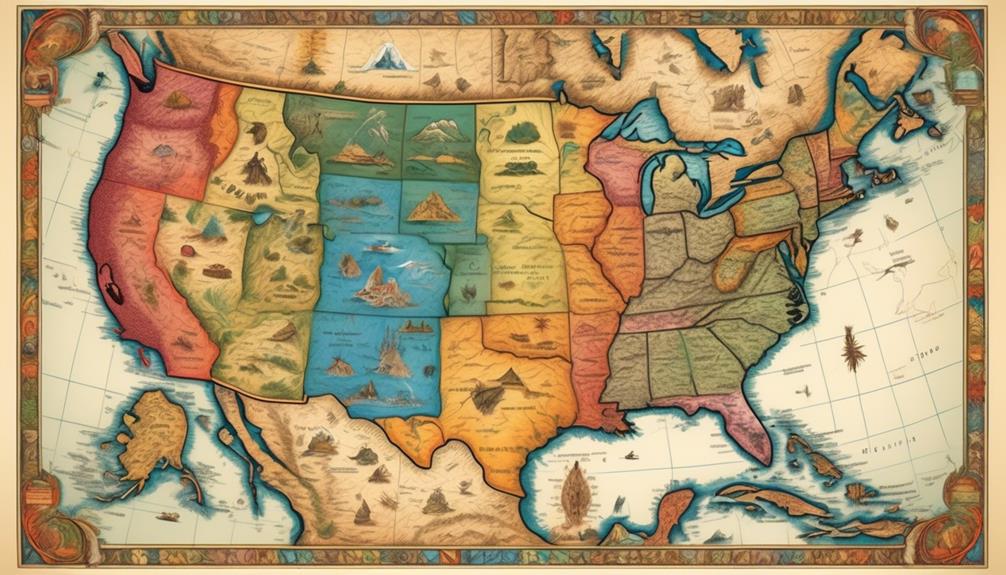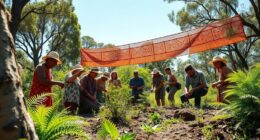When Mexico is mentioned, we often think of its vibrant culture, rich history, and diverse population. However, what about the indigenous people who have been instrumental in shaping this nation?
Understanding the complexities of what it means to be indigenous Mexican goes beyond the surface and delves into a world of traditions, struggles, and resilience.
As we explore this topic, we will uncover the historical significance, cultural diversity, and contemporary contributions of indigenous Mexicans, shedding light on the challenges they continue to face and the ways in which they are preserving their heritage.
Key Takeaways
- Indigenous Mexican societies have a strong sense of community and connection to the land, with societal structures based on kinship, communal living, and agriculture.
- Indigenous Mexican cultures have been influenced by civilizations such as the Olmec, Maya, and Aztec, resulting in a rich diversity of linguistic, artistic, and culinary traditions.
- Indigenous communities in Mexico face challenges such as discrimination, limited access to basic services and opportunities, unequal land distribution, and environmental degradation.
- Indigenous Mexicans make significant contributions to Mexican society through their innovative artwork, revitalization of traditional crafts and agricultural practices, and their resilience in preserving their languages and cultural heritage.
Historical Background of Indigenous Mexicans
The history of Indigenous Mexicans is deeply intertwined with the rich and diverse cultural tapestry of Mexico. Pre-colonial influences played a significant role in shaping the societal structures of Indigenous Mexican communities. Before the arrival of the Spanish conquistadors, these communities had well-established societal structures based on kinship, communal living, and agricultural practices. They were organized into city-states, each with its own political and religious systems. The influence of the Olmec, Maya, and Aztec civilizations, among others, left a lasting impact on the cultural, religious, and linguistic diversity of Indigenous Mexicans.
The societal structures of Indigenous Mexicans were characterized by a strong sense of community and a deep connection to the land. They practiced subsistence agriculture, cultivating crops such as maize, beans, and squash. This agricultural lifestyle influenced their social organization, as communities worked collectively to ensure the well-being of all members. Additionally, their religious beliefs and practices were deeply integrated into everyday life, emphasizing a harmonious relationship with nature and the spiritual world.
Cultural Diversity and Traditions
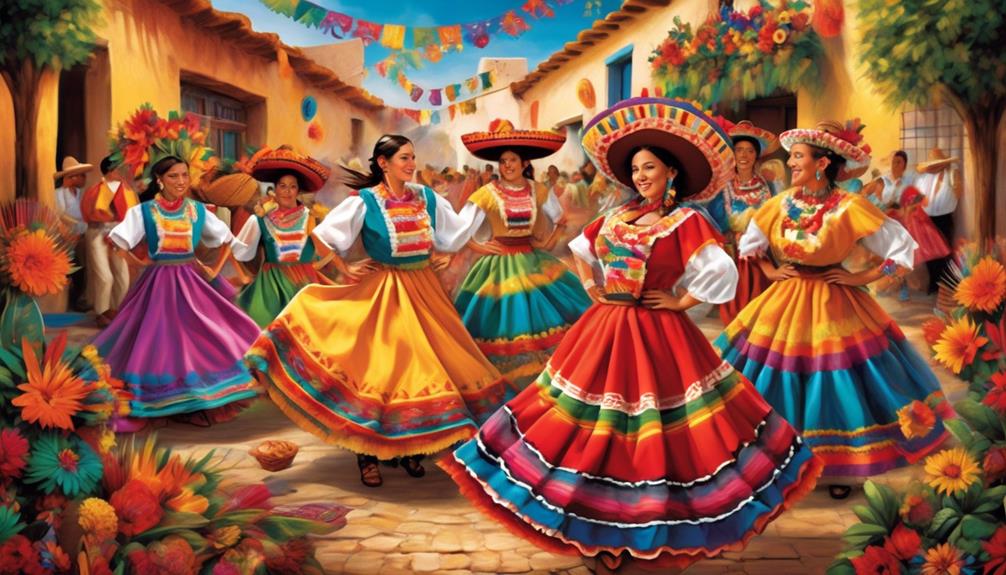
Incorporating a range of linguistic, artistic, and culinary traditions, Indigenous Mexican culture reflects a vibrant tapestry of diverse customs and practices. Cultural celebrations are integral to Indigenous Mexican communities, serving as occasions to honor traditional beliefs and values. These celebrations often involve music, dance, and elaborate costumes, offering a rich insight into the community's heritage. Traditional crafts, such as intricate textiles, pottery, and woodcarvings, also play a significant role in Indigenous Mexican culture, with each piece reflecting the unique artistic expressions of different regions and communities. These crafts are not only a means of preserving ancestral techniques but also a way of passing down stories and traditions to future generations.
| Cultural Celebrations | Traditional Crafts |
|---|---|
| Day of the Dead | Textiles |
| Guelaguetza | Pottery |
| Fiesta Patronales | Woodcarvings |
| Carnaval | Embroidery |
| Semana Santa | Basketry |
The diversity of cultural celebrations and traditional crafts in Indigenous Mexican culture underscores the richness and complexity of this vibrant heritage.
Challenges Faced by Indigenous Communities
What are the significant challenges faced by Indigenous communities in Mexico today?
Indigenous communities in Mexico continue to face significant challenges, with discrimination and economic inequality being two of the most pressing issues. Discrimination against Indigenous peoples is pervasive, affecting their access to education, healthcare, employment, and participation in political processes. This discrimination is rooted in historical prejudices and stereotypes, leading to marginalization and social exclusion.
Economic inequality further exacerbates the challenges faced by Indigenous communities. Many Indigenous people live in poverty, with limited access to basic services and economic opportunities. This economic disparity is often perpetuated by unequal land distribution, limited access to credit, and lack of support for traditional livelihoods.
Additionally, environmental degradation and resource exploitation further impact Indigenous communities, threatening their traditional ways of life and exacerbating their economic vulnerability.
Addressing these challenges requires comprehensive efforts to combat discrimination, promote economic empowerment, and safeguard Indigenous rights. It also necessitates fostering greater understanding and respect for Indigenous cultures and traditions within Mexican society.
Contemporary Contributions to Mexican Society
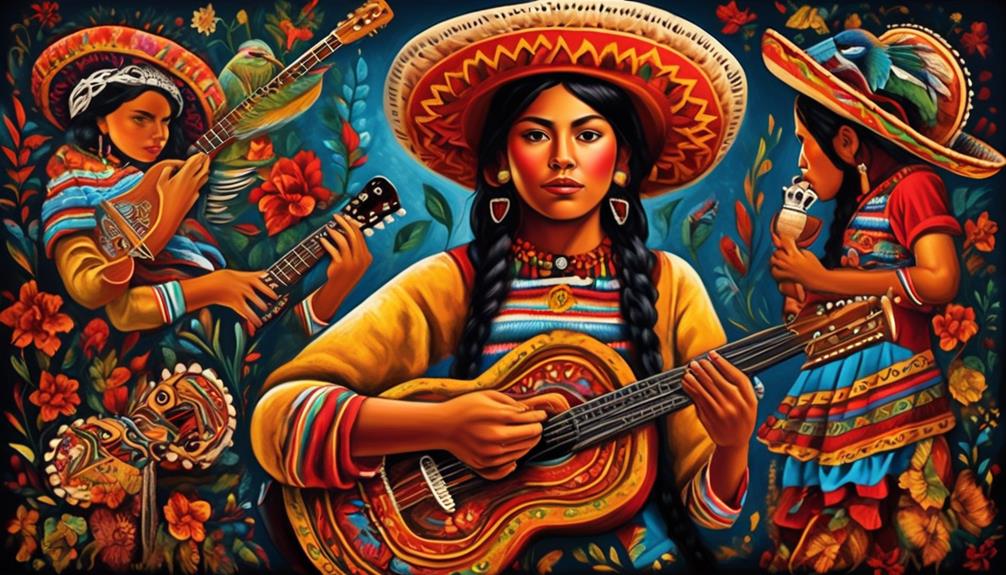
Contending with the enduring challenges of discrimination and economic inequality, Indigenous communities in Mexico continue to make significant and diverse contributions to the country's societal fabric. One notable area where Indigenous groups have made a mark is in contemporary art. Their rich cultural heritage and traditional craftsmanship have inspired a new wave of Indigenous artists who are gaining international acclaim for their innovative work. Through their art, they aren't only preserving their cultural identity but also challenging societal stereotypes and showcasing the vibrancy of Indigenous creativity.
In addition to their artistic endeavors, Indigenous communities are also actively involved in initiatives for economic empowerment. Many Indigenous groups have been revitalizing traditional crafts and agricultural practices, leveraging them as sources of income. Furthermore, there's a growing movement to support Indigenous-owned businesses, promoting fair trade and sustainable economic development within these communities. By harnessing their cultural traditions and entrepreneurial spirit, Indigenous peoples are playing a vital role in shaping Mexico's contemporary economic landscape.
These contributions not only benefit their own communities but also enrich the broader tapestry of Mexican society.
Preservation of Indigenous Languages and Heritage
Indigenous communities in Mexico actively preserve their languages and heritage, safeguarding centuries-old traditions and cultural knowledge from the pressures of modernization and globalization. This preservation is crucial for the survival and flourishing of indigenous cultures.
Here are some key aspects of the ongoing efforts for language revitalization and cultural preservation:
- Community Language Programs: Many indigenous communities have established language immersion programs and schools where children are taught their native languages alongside standard curriculum subjects.
- Oral Tradition Preservation: Elders play a vital role in passing down oral traditions, myths, and storytelling to younger generations, ensuring the continuity of cultural heritage.
- Cultural Festivals and Celebrations: Indigenous communities organize and participate in cultural events and festivals where traditional dances, music, art, and rituals are showcased and celebrated.
- Collaborative Documentation Projects: Collaborations between indigenous communities and linguists/anthropologists have led to the documentation and preservation of endangered languages, often resulting in the creation of written materials and educational resources.
These efforts reflect the resilience and determination of indigenous communities to maintain their linguistic and cultural heritage in the face of external pressures.
Frequently Asked Questions
What Are the Main Economic Activities of Indigenous Mexican Communities?
The main economic activities of indigenous Mexican communities include traditional practices like agriculture, handicrafts, and fishing, which are vital for their livelihoods. These communities also navigate modern influences by engaging in tourism, ecotourism, and selling artisanal products.
Economic opportunities arise from government initiatives to support indigenous businesses and promote cultural preservation. Balancing economic activities with cultural traditions is essential for the sustainable development of these communities.
How Do Indigenous Mexicans Traditionally Govern Themselves?
Traditionally, indigenous Mexicans govern themselves through a system of traditional leadership and decision-making processes rooted in their rich cultural heritage.
The intricate web of customs, rituals, and community consensus shapes their governance, ensuring collective participation and representation.
This organic approach to leadership fosters a profound sense of belonging and unity, emphasizing communal well-being over individual interests.
Indigenous governance reflects a deep reverence for ancestral wisdom and a commitment to sustaining harmonious, self-sufficient communities.
What Are Some Common Misconceptions About Indigenous Mexican Culture?
Common misconceptions about indigenous Mexican culture include oversimplifying traditions, overlooking the diversity of identities, and underestimating the importance of preservation efforts.
These misconceptions fail to acknowledge the complexity and richness of indigenous Mexican cultures, which are deeply rooted in traditions, and are actively working to preserve their unique identities in the face of modern challenges.
Understanding and acknowledging these aspects is crucial to appreciating the true depth and significance of indigenous Mexican culture.
How Do Indigenous Mexicans View Their Relationship With the Land and Environment?
Indigenous Mexicans view their relationship with the land as fundamental to their identity. Land stewardship is ingrained in our cultural heritage, emphasizing respect and harmony with the environment.
Preservation of the land is central to our way of life, ensuring its sustainability for future generations. We believe in the interconnectedness of all living beings and strive to maintain a balanced and symbiotic relationship with the natural world.
What Are the Main Factors Contributing to the Decline of Indigenous Languages in Mexico?
Language preservation is crucial for indigenous communities in Mexico. The decline of indigenous languages stems from cultural assimilation, limited access to education in native tongues, and migration to urban areas. These factors erode the transmission of language within communities.
Efforts to revitalize and preserve indigenous languages through education, media, and community initiatives are vital for sustaining cultural diversity and identity. Indigenous language preservation is a cornerstone of cultural heritage.
Conclusion
In conclusion, the indigenous Mexican communities have faced numerous challenges throughout history, yet they've persevered and continue to contribute to the rich cultural tapestry of Mexico.
Their diverse traditions and languages are a valuable part of our national heritage, and it's our responsibility to ensure their preservation for future generations.
Let's honor the resilience and strength of indigenous Mexicans, and work towards a more inclusive and equitable society for all.
